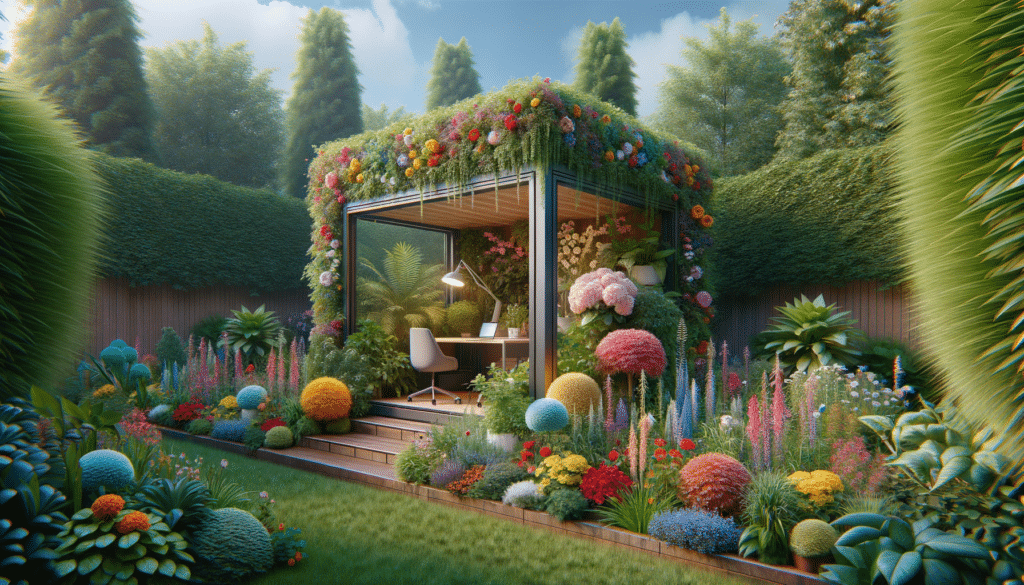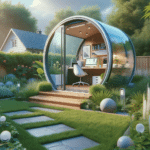Understanding the Benefits of a Garden Office
In recent years, the concept of a garden office has gained significant traction among homeowners and professionals alike. A garden office offers a unique combination of convenience and tranquility, providing a dedicated space to work without the distractions often found in a traditional home office setting. This secluded area allows for increased productivity and creativity, as the natural surroundings can inspire and refresh the mind.
One of the primary benefits of a garden office is the separation it creates between work and home life. By having a distinct workspace outside the main living area, individuals can establish clear boundaries, enhancing work-life balance. This separation can lead to improved mental health, as it reduces the likelihood of work-related stress spilling over into personal time.
Moreover, garden offices can be tailored to meet specific needs and preferences, offering flexibility in design and functionality. Whether you require a minimalist setup or a fully equipped workspace with high-tech amenities, garden offices can be customized to suit your professional requirements. Additionally, they can be designed to blend seamlessly with the surrounding environment, enhancing the aesthetic appeal of your property.
Key benefits of a garden office include:
- Increased productivity and focus due to a quiet, dedicated workspace
- Enhanced work-life balance with clear separation from home activities
- Customizable designs to meet individual needs and preferences
- Potential increase in property value through aesthetic enhancements
Designing Your Garden Office: Key Considerations
Designing a garden office involves several important considerations to ensure the space is both functional and aesthetically pleasing. First and foremost, assessing the available space is crucial. The size of your garden will dictate the dimensions of your office, and careful planning is necessary to make the most of the area without overwhelming the garden’s natural beauty.
When selecting materials for your garden office, consider options that complement the existing landscape and are durable enough to withstand various weather conditions. Sustainable materials such as timber or recycled composites are popular choices, offering both environmental benefits and a natural look that harmonizes with outdoor settings.
Lighting is another critical aspect of garden office design. Maximizing natural light is ideal, not only for energy efficiency but also for creating a bright, inviting workspace. Large windows or skylights can help achieve this, while also providing a connection to the outdoors, which can enhance mood and productivity.
Additionally, consider the interior layout of your garden office. Ergonomic furniture and efficient storage solutions are essential for creating a comfortable and organized work environment. Incorporating elements such as plants or artwork can further personalize the space, making it a place where you enjoy spending time.
Key considerations for garden office design include:
- Space assessment and planning for optimal use
- Selection of durable, sustainable materials
- Maximization of natural light through windows and skylights
- Ergonomic furniture and efficient storage solutions
Cost-Effective Solutions for Your Garden Office
Creating a garden office doesn’t have to break the bank. With careful planning and smart choices, you can develop a cost-effective solution that meets your needs without compromising on quality. One approach is to repurpose existing structures, such as sheds or outbuildings, into functional office spaces. This can significantly reduce construction costs while providing a solid foundation for your project.
Another cost-saving strategy is to opt for modular or prefabricated garden offices. These structures are typically more affordable than custom-built options and can be assembled quickly, minimizing labor expenses. Additionally, they often come with a range of customizable features, allowing you to tailor the space to your specific requirements.
Investing in energy-efficient solutions can also lead to long-term savings. For instance, installing solar panels or using energy-saving insulation materials can reduce utility bills and contribute to a more sustainable workspace. Furthermore, choosing low-maintenance materials and finishes can decrease ongoing upkeep costs.
By carefully evaluating your needs and exploring various options, you can create a garden office that is both affordable and functional. Remember to consider factors such as location, size, and intended use when planning your project, as these will influence the overall cost and design of your garden office.
Cost-effective solutions for garden offices include:
- Repurposing existing structures to reduce construction costs
- Choosing modular or prefabricated options for affordability
- Investing in energy-efficient solutions for long-term savings
- Using low-maintenance materials to decrease upkeep expenses


